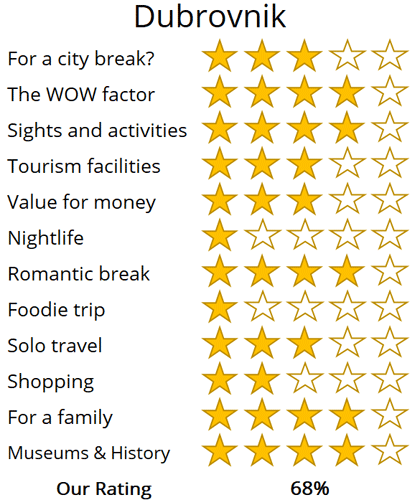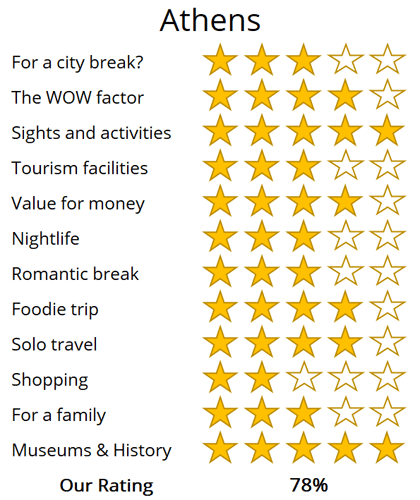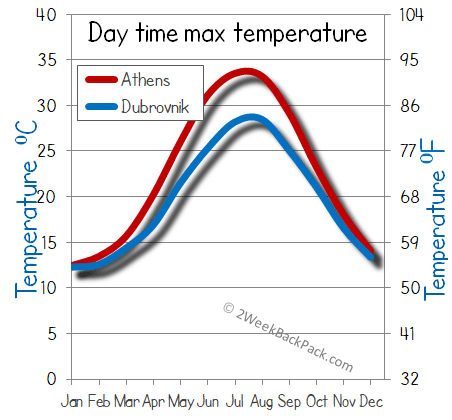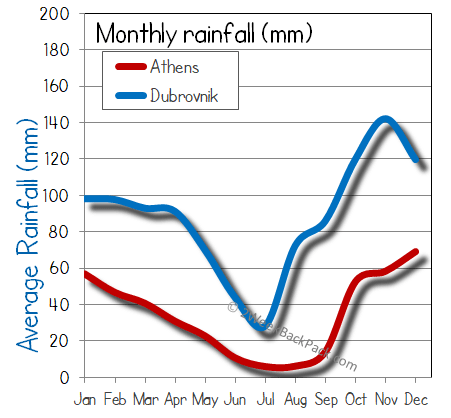WhereToGoForMyHoliday.com
The best destination comparison site!
WhereToGoForMyHoliday.com
The best destination comparison site!
Dubrovnik or Athens, which is better for your holiday in 2024?
Dubrovnik and Athens both offer unique and enticing experiences, but which one should you choose for your city break or holiday?
We recognise the difficulty in making this decision. While there is abundant information available on both destinations, clear guidance on which city better aligns with your travel preferences is often hard to find.
This article aims to provide an impartial comparison of Athens and Dubrovnik, and hopefully help you to choose the best city to visit.
The article is structured into several sections, each of which can be directly accessed through the following links:
• Introduction to the cities
• Scores and ratings
• Which one should I, friends, or family visit?
• When to visit and weather
• Who is the city suited for?
• The perfect 48hours (with map)
• Tourism details (where to stay? airport details?)
Introduction to Dubrovnik and Athens
Dubrovnik, a jewel of the Adriatic, beckons modern travellers with its sublime blend of medieval charm and contemporary allure. Encircled by iconic stone walls, this UNESCO World Heritage site offers a timeless journey through cobbled streets and baroque buildings, each telling tales of a rich, turbulent history.
Yet, beyond its historical treasures, Dubrovnik embraces the present with open arms, offering a plethora of chic restaurants, trendy boutiques, and vibrant nightlife. The stunning coastline, dotted with pristine (stone) beaches and crystal-clear waters, provides a tranquil escape from the city’s bustling heart.
For the discerning traveller seeking a blend of culture, history, and natural beauty, Dubrovnik stands unrivalled—a truly captivating destination.
Athens, a city where antiquity meets modernity, invites travellers to embark on a journey through time. The Greek capital, steeped in history, proudly displays its ancient treasures while embracing the vibrancy of contemporary life.
The Acropolis stands as a monumental testament to Athens' glorious past, offering awe-inspiring views and a palpable connection to the city’s ancestors. Down below, lively neighbourhoods and trendy cafes showcase the modern Athenian spirit.
Whether indulging in delectable Mediterranean cuisine, exploring historic ruins, or wandering through charming streets, visitors are sure to be captivated. Athens is not just a destination; it’s an invitation to adventure, a place where the past and present dance together in harmonious splendour.

The Acropolis stands high above Athens
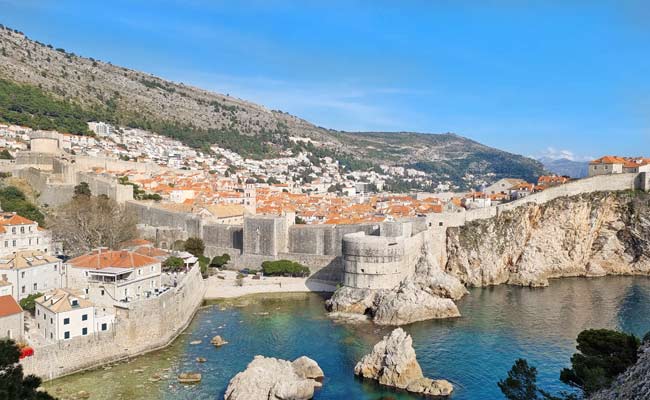
Dubrovnik is one of the most picturesque cities in Europe, so long as your happy to share the experience with thousands of other tourists.
High-level summary for Dubrovnik and Athens
Summary
Where would I journey for a personal escape?
Athens
Where would I send my parents for a memorable visit?
Dubrovnik
Where's the ideal destination for my adventurous 19-year-old cousin?
Athens
Where should my food-obsessed friend indulge their culinary passions?
Dubrovnik
Note: The above comparisons are weather-independent and are based on travel during the most opportune times of the year. Details about the ideal travel seasons are elaborated upon later in this article.
In the sections that follow, you'll find a comprehensive comparison between these two fascinating cities. This includes recommendations on the duration of stay, the best times to visit, and tailored 48-hour itineraries for each city.
The final segment delves into practicalities for your travels, such as the best airport to fly into, the optimal districts for your accommodation, and insider tips, for when you come to explore the city.
We hope that you find all of this information useful, in planning your next exciting trip!
Destination details
How long to spend each city?
Athens can be sampledin a few days, but it can also warrant trips of a few weeks or more. It all really depends on what you want out of your visit. If it's a whirlwind tour of the famous 5th-century history sights (the Acropolis, the Parthenon, the Agora), some Greek mezze, and a good night out that takes your fancy, then a weekend could be enough.
If you want to feel like a real local, sip gritty Greek coffees in corner bars in alt neighborhoods, and even escape to the islands to top up the tan, you'll need to plan longer.
Choosing how long to spend in Dubrovnik really depends on what you want out of your city break. A fly-in whirlwind tour of the Old Town can be great if you're on the hunt for culture and history. The museum collections of the Sponza Palace and the Rector's House, walking routes of the City Walls, and sightings of landmarks like Large Onofrio Fountain can all be packed into just a day or two.
But it might be best to allow a little extra time. With all the castles and churches here, it's easy to forget that Dubrovnik is an Adriatic riviera destination at heart. You've got pine forests, olive groves, rakija distilleries and the lost-paradise island of Mljet to think about. You certainly won't want to rush those during the warmer months, so consider staying a week or more to explore the city itself and those stunning surroundings.

The National Archaeological Museum, houses the world’s finest collection of Greek artefacts
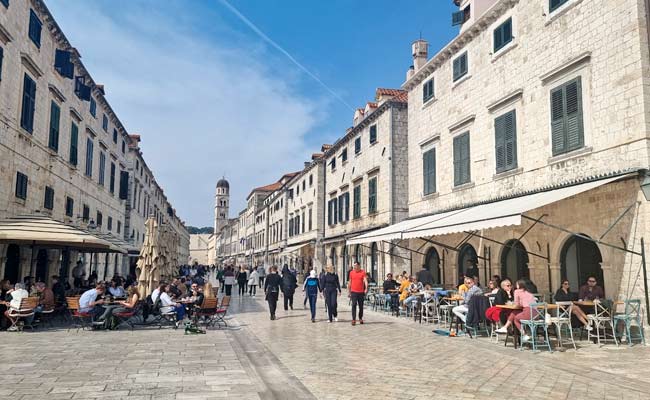
The Stradun is the characterful main street of Dubrovnik
Athens is most popular in the summer months, but we'd say it's not the best time of year to come. Temperatures in Greece can be scorching between June and August, with daily highs peaking around the 40 Celsius mark!
Much better are the shoulder seasons of spring and autumn. These see warm days and cool evenings of between 16-29 degrees on average. It's still usually dry, with the occasional cloud and rainfall. However, there are also fewer people around, cheaper hotels, and smaller queues for the ancient ruins.
Winter in Athens gets surprisingly cold. Snow can even fall in the height of the season. It's the best if you really don't like dodging other tourists though, with the museums and the galleries all virtually empty. Be warned that ferries to nearby islands like Poros and Aegina rarely run between November and March.
Summer might seem like the perfect time to put together a trip to Croatia's castle city. However, temperature highs in the low 30s and strong midday sun can make things a little tiring. And that's not even mentioning the whopping great big crowds. Recent protests by Dubrovnik's locals have really highlighted the problem of summertime tourism – there's hardly an inch to move in the Old Town, especially when huge cruise ships are docked at port.
Things might improve thanks to recent laws barring any more than two large vessels per day, but we still think September and October come up trumps. This southern corner of the Balkans stays pleasantly warm well into the autumn, so you shouldn't have to worry about having the weather to laze on Lapad Beach. What's more, visitor numbers, hotel rates, and flight prices all plummet following the end of the summer vacations.
The history lover is the traveller who will surely feel most at home in Athens. After all, this is the place of the mighty Parthenon; where the Athenian Empire once flourished. And it's got Orthodox temples and some of the most acclaimed ancient artifact museums on the globe to top the lot off. You can spend whole trips hopping between crumbling temples and learning about the hard-fought Peloponnesian War, without even scratching the surface of the amazing daytrip possibilities.
Aside from its famous historical relics, Athens also has a reputation for hedonism. Districts like anarchist Exarcheia come laced with squat bars and buzzy pubs. There's also pumping nightlife around the Plaka area, where you'll be able to dine on endless platters of saganaki cheese, hummus, and grilled lamb before heading out to dance the Zorba.
If you're planning a Greek beach holiday, then Athens is a good arrival point. You're likely to be a little disappointed if you hang around too long, though. The only sands within reach of the centre are in Vouliagmeni to the south and they certainly aren't the best in the country.
If you're one for enthralling tales of warring republics and battles with the Ottomans, Dubrovnik has you covered. If you're the sort who loves jaw-dropping European old towns with enough castles and churches and cobbled alleys to keep you going for a whole trip, it's also perfect.
Oh, and Dubrovnik takes care of globetrotters who come in search of a little Mediterranean sand, sun and sea. You won't have to venture far to find a cove to swim in, a yacht charter, or even a remote island villa where you can crank up the R&R.
If you're not big on crowds, then summer trips (as noted above) to Dubrovnik are surely best avoided. And it's hardly the place for anyone in search of big-metropolis vibes. For a city, Dubrovnik is relatively small and compact.
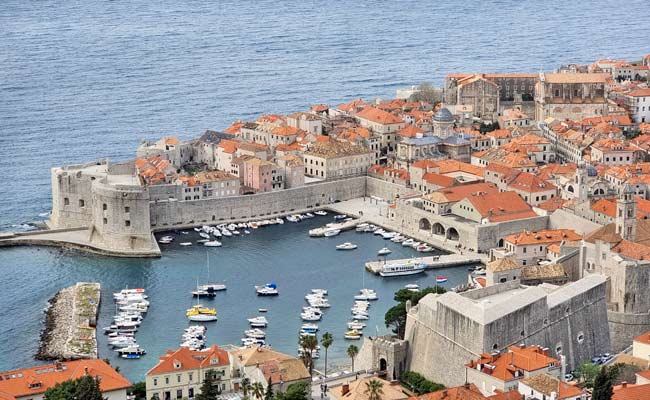
The pretty harbout of Dubrovnik

The delightful Pláka district, is a maze of narrow streets on the northern slopes of the Acropolis
48hours in Dubrovnik
Hopping from crenulated towers overlooking the Adriatic Sea to hidden local swimming spots to soaring summits in the Dinaric Alps, this fun-filled 48 hours could just be the perfect introduction to this awesome city:
Day 1: Start – where else? – on buzzy Stradun. The main artery of the Old Town of Dubrovnik, it runs from the port to Pile Gate (a 16th-century stone gatehouse that's worth a photo stop), passing Irish pubs, coffee joints, and Croatian konoba (taverns) as it goes. Sip a cappuccino and devour a pastry there before making for the Large Onofrio Fountain.
An elaborate water feature that's stood since the 1430s, it still dispenses crystal-clear water for drinking. Fill the bottle and then move to the iconic City Walls. These can be traversed entirely.
You can choose to do them on a guided tour (a Game of Thrones tour is available) or by yourself. In all, the whole stroll takes around two hours from start to finish, covering two kilometres of fortifications that include glimpses of famous citadels like Fort Minčeta (1319) and the dungeon-like Fort Revelin (now home to an EDM nightclub – remember that for later!).
For the evening, retreat to the legendary Buža Bar. It gazes straight out southwards across the Adriatic Sea. You can watch locals diving from the rocks into the water as you sip your sundowner beer.
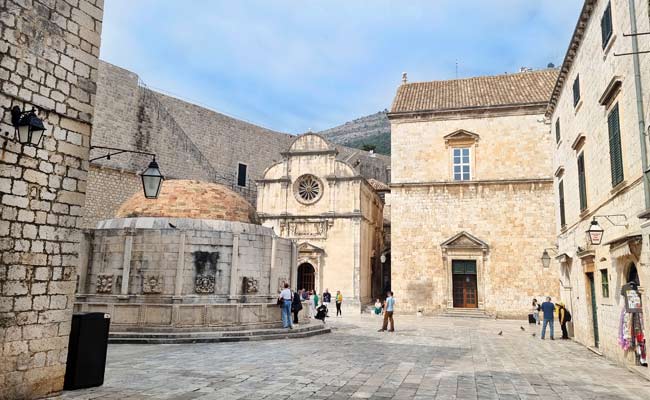
The Onofrijeva fountain and the towering city walls of Dubrovnik
Day 2: Kick start the day with a dip in the Med at Banje Beach. This is the closest beach to the Old Town of Dubrovnik and has a free section where you can take a quick swim while gawping at the high fortresses overhead.
Cafés and gelato shops line Frana Supila just above it, where you can grab a bite for breakfast before making for the base station of the Dubrovnik Cable Car – it's less than 500 metres away. Tickets might cost 170 HRK (€22) apiece, but the sweeping 180-degree views from the top station of Mountain Srd are simply awesome.
You'll be able to see the red-tiled roofs of the Old Town below, the wooded crags of Lokrum Island, and the remote Elaphiti Islands (perfect day outings by boat if you have some more time to spare) beyond.
Return to ground level and then hop on a bus going over to the Lapad Peninsula. This is great for the evening. A quick splash in the sea can be followed by uber-fresh seafood dinners with crisp Croatian wine in the traditional taverns just by the bay.
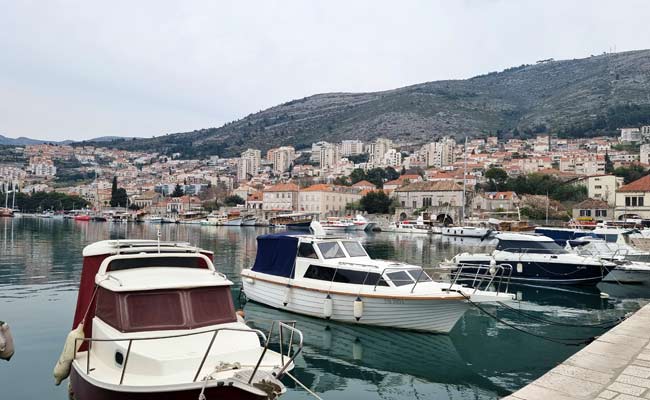
The New Town of Dubrovnik is centred around the harbour
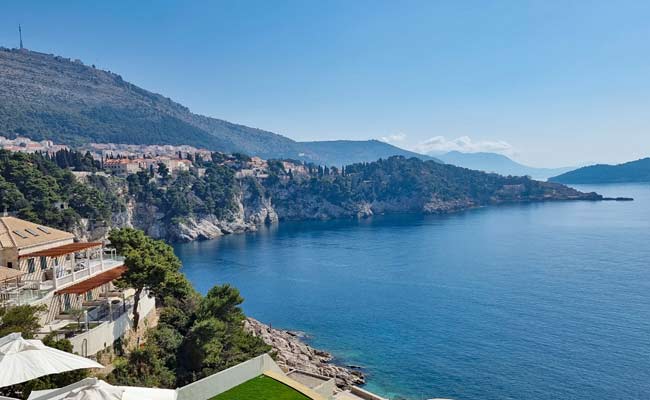
The dramatic coastline to the west of Dubrovnik Old town
48hours in Athens
Searching for an all-round fantastic 48 hours in the Greek capital? Look no further. This culture-packed and monument-filled itinerary whizzes you through all the mainstay sights and even into some downright gritty local districts. Enjoy…
Day 1: Start as early as you can and head straight through the Plaka area up to the base of the Acropolis. The best way to reach that grand monument is via the winding roads that link up the tavernas with the great Propylaea gatehouse that dates to 437 BC. It was commissioned by Perikles in the aftermath of the Persian War and leads to the symbolic heart of ancient Athens: The Parthenon.
Getting there early means you can hopefully dodge the crowds and the heat. Take some time to wander to see the hulking columns and design – it's considered to be the finest Doric temple on the planet. The next-door Erechtheion also catches the eye. It was built after 421 BC in honour of Poseidon and Athena, famed for its Caryatid statues of female figures. A lookout point on the south-east end of the Acropolis is perfect for taking in the city views.
For lunch, go for the vibrant area of Koukaki, checking out the Theatre of Dionysus en route. It's filled with hip cafeterias and bakeries, all huddled under plane trees and bougainvillea. It's a short walk from there to the acclaimed Acropolis Museum. You can while away the whole afternoon within, uncovering the story of the legendary building and the politics it represented.
Think about ending the day with a walk through the pine trees to Filopappou Hill. That's home to the place where Socrates was imprisoned in the early 390s BC and tops out with some of the most stunning views of the Acropolis there are.

The Parthenon was dedicated to the Greek goddess Athena, who is regarded as the patron of the city
Day 2: The café culture of Monastiraki gets the day rolling – think about grabbing a traditional Greek coffee and pastry in one of the local bakehouses. A quick stroll through the blocks southwards then takes you to the Agora.
That was the epicentre of life in the ancient city state, complete with shrines and marketplaces and statues. The piece de resistance is the Temple of Hephaestus, which crowns a hillside on its northern end. Nearby, the blocks of Syntagma and Syntagma Square offer a glimpse at the modern edge of the Greek capital.
The vast plaza at the area's heart hosts the Old Royal Palace of the Greek monarchy. There are also countless places to sit with a cold lunchtime beer. Finished? Go south and you'll find the mighty Temple of Olympian Zeus. It is half ruined but still draws a gasp from most visitors on account of its monstrous Corinthian columns.
In the afternoon, catch a tram towards the National Archaeological Museum. Inside, you'll discover perhaps the richest collection of ancient artifacts there are in the world.
What's more, the district on the doorstep is Exarcheia. Be careful with your valuables in those parts, because it's rough and gritty, but the streets ooze character and have perhaps the most hedonistic bars in the country.

The Old Parliament House served as the parliament building until 1935
Traveling from Athens airport is best done using the metro. Line 3 links directly to the terminal. The fare is a flat €10 and the journey takes around 40 minutes each way. If leaving the city, be sure to catch the right train, because not all departures on the line go to the same place.
There are some areas that really stand out from the crowd when it comes to finding hotels in Athens. The Plaka is popular for its traditional Greek restaurants and proximity to the ancient sites.
Kolonaki has lots of chain hotels with rooftop pools and breakfast terraces. But Koukaki is also worth considering, for its local vibes and charming B&Bs.

The Theatre of Dionysus
Always beware of pickpockets, muggers, thieves and scams in Athens. The capital is generally safe, but certain areas – the Plaka, Omonoia Square and Exarcheia especially – do see regular crimes against tourists. Try to keep a hand on your wallet and an eye on your bag at all times.
Political upheavals in Athens are a common problem. Widespread discontent with the government has led to regular protests and marches since the 2000s. They can sometimes bring the whole city to a standstill and are worth avoiding – teargas, clashes with police and even Molotov cocktails have been known to play a part.
Getting around Athens is relatively easy. You've got a metro network that links most of the main tourist areas and the airport. Above ground, there are buses and trams going out to lesser known neighborhoods. There are both kiosks and vending machines at the entrance to most stations for you to buy tickets. They cost €1.40 and are valid for 90 minutes from the moment of validation.
You'll want to arrive and depart from Dubrovnik Airport if you're coming on a quick city break. It's located just over 15 kilometres from the heart of the city. Shuttles run regular routes from the Old Town and the Kantafig bus interchange to the airport terminals. The journey takes around 45 minutes to an hour in good traffic and costs between 35-55 HRK, depending on the operator you choose.
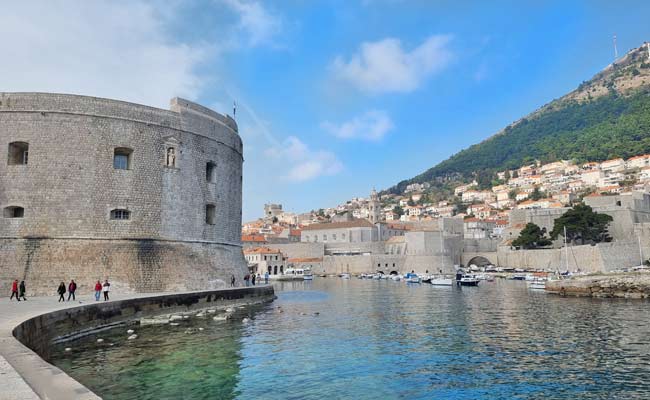
The entrance to Dubrovnik harbour
Dubrovnik is a super walkable city. In fact, getting lost in the Old Town area is one of the best things to do here. Don't go thinking you can use the City Walls to navigate. The ticket for those costs 200 HRK (€29) and is only valid for a single entry.
To get back and forth from districts around the Old Town and the beaches of Lapad and beyond, there's an efficient local bus network. Virtually all routes will either take you to the historic heart of Dubrovnik or terminate at the main Kantafig station. You can purchase fares onboard for 15 HRK but they're a little cheaper if bought from a kiosk in advance.
Try to seek out a place to stay as close to the Old Town as you can if you're coming to see the history sights and enjoy the walking tours. Remember that the district is super compact, so boutique B&Bs with cosy rooms are the name of the game within its boundaries. For extra space and proximity to the Adriatic Sea, you could look to the larger hotels and guesthouses around Banje Beach or Gruz to the north.
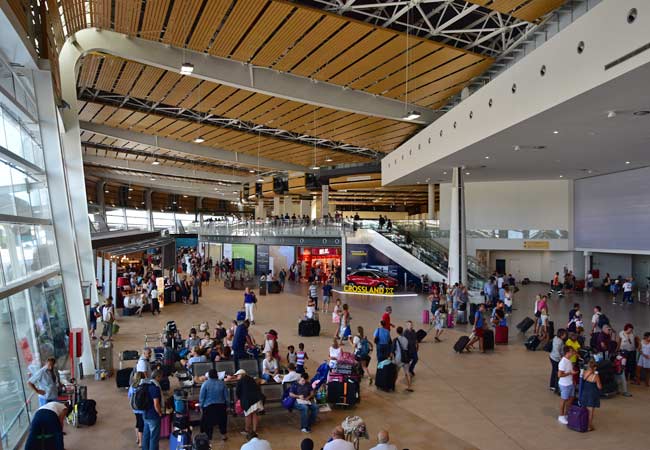
oh we were stuck in the airport!

Copenhagen was a bit expensive...

All we did was drink beer in Brussels...
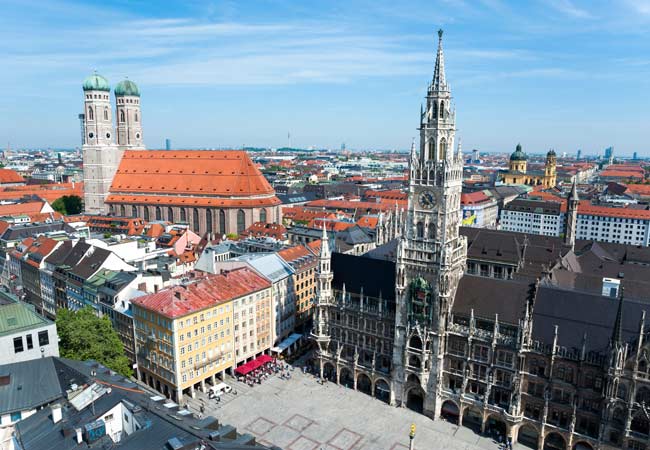
Muncih was crazy

And we got so burnt!

Remeber that night in Rome

oh we were stuck in the airport
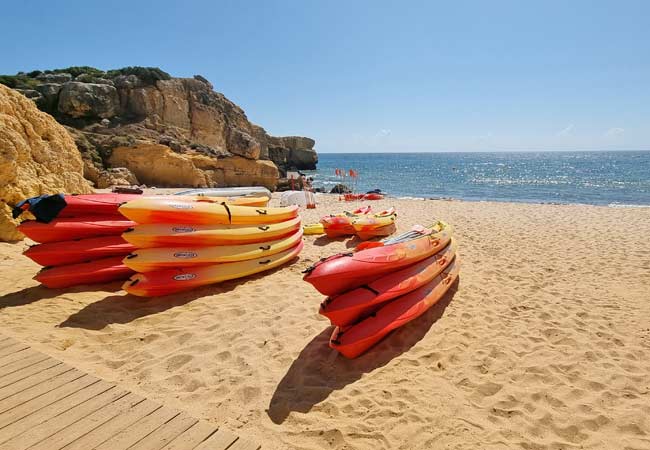
So much fun kayaking

Berlin and that group from Austria!

There was such a view from that church

And we got so burnt!

Munich was eventful, wasn't it!

Such a view from that cathedral in Florence
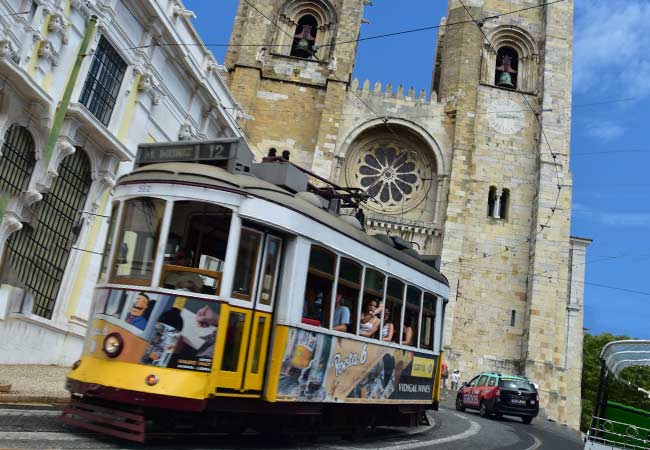
Lisbon was such so much fun

Last summer was so much fun .... x

Remeber that night in Rome

Lisbon was such so much fun

Such a view from that cathedral in Florence

Munich was eventful, wasn't it!

And we got so burnt!

Remeber that night in Rome

All we did was drink beer in Brussels...

Berlin and that group from Austria!

Can't wait to go back to Dubrovnik

Remember that boat ride in Prague

Copenhagen was a bit expensive...
